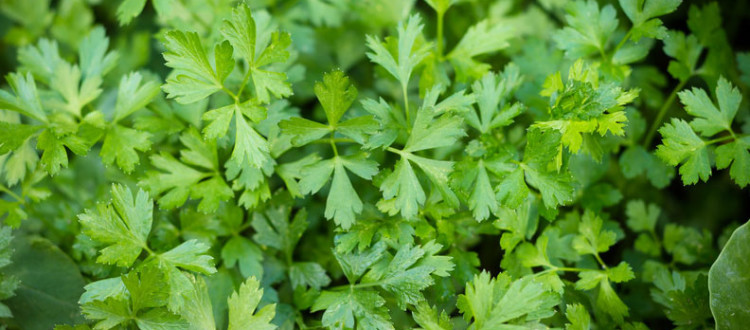Italian Parsley
Italian parsley (Petroselinum crispum) is a flat leafed plant that at first glance is sometimes confused with cilantro, but tastes nothing like it. The flavor is a combination of tangy, floral and peppery notes and the leaves are a dark green. Freshly cut Italian parsley delivers maximum flavor that dried or even store bought can’t match, and adds a lot of flavor to a variety of dishes.
Italian parsley does best in temperate conditions: not too hot and not too cold, and that makes it a good choice for indoor growing as well as outdoors. If summers in your area are very hot, Italian parsley will appreciate some afternoon shade.
How to Plant
Make sure the planting area has been tilled and loosened to allow the tap root of Italian Parsley room to grow. Space the plants out about 8 to 10 inches apart. Be sure to plant on an overcast day if possible or late in the afternoon to avoid stressing the plant too much. As with parsley, try to shield the new transplants from the sun for the first day or so as it will still be trying to acclimate to its new home.
Make certain the soil remains watered until the parsley is established. Use a mulch to help maintain adequate moisture levels in the soil and to prevent weeds from popping up. Once the plant is established in the garden, watering can be reduced to once a week or so. If you’re growing Italian parsley in a container, watering may be required on a daily basis.
Fertilizing
A slow release fertilizer is a good choice for growing parsley. Work it into the soil before planting, or top dress the area around the base of the plant. No further fertilization is required.
Harvesting
Italian parsley can be harvested once the plant begins producing leaves with three segments.You should start with the larger leaves on the outside of the plants, and allow the smaller immature leaves in the center time to mature.
If you don’t plan on using the freshly harvested leaves right away, moisten them and put them in a plastic bag and refrigerate for up to two weeks. Store dried leaves in an airtight jar for up to a year.
Recommendations for Use
- The most common way to use Italian parsley is to add it fresh to sauces of all varieties. including tomato, cream or wine-based sauces
- Use Italian parsley in salad dressings, soups, stocks and pestos
- Italian parsley pairs well with basil and oregano
Recipes: Boneless Roasted Leg of Lamb

